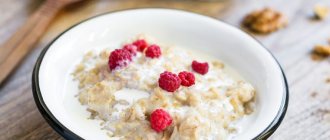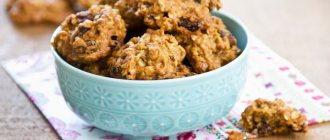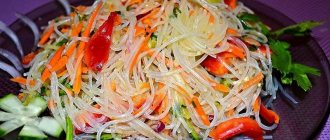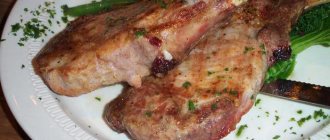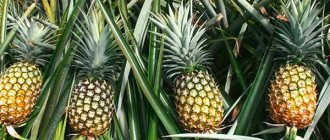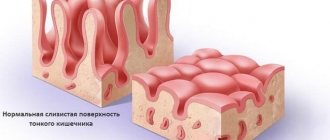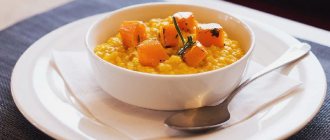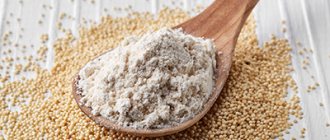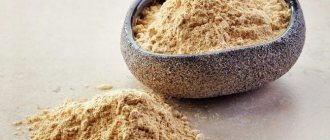Oatmeal now occupies a leading place in the list of products for people who prefer to lead a healthy lifestyle. But it was not always eaten. For a long time, people considered this cereal a harmful weed and actively destroyed it. What exactly is this product and are its merits in preserving health exaggerated? The topic of our conversation is oatmeal: benefits, harm, use and methods of preparation.
What is the composition and calorie content of “porridge for healthy people”?
There is an opinion that eating a bowl of oatmeal for breakfast means getting a boost of energy that will last for the whole day. Is it really? An indicator that will help you accurately understand whether oatmeal is really healthy is calorie content .
Nutritionists have calculated that a 100 g serving of oatmeal contains 345 kcal. This is a valuable low-calorie food product. A big plus is the high protein content - 16.86 g. The amount of carbohydrates in this cereal is even higher - 66.27 g, which cannot be said about fats - 6.9 g.
Oatmeal contains iron (4.72 mg), zinc (3.97 mg), copper (630 mg), magnesium (177 mg), potassium (429 mg), phosphorus (532 mg) and many other useful components , which ensure the growth process and strengthen the body.
Oats are a true champion among cereals in terms of the content of enzymes that help cleanse the body of toxins. The grains of this plant are rich in phospholipids. These substances effectively normalize metabolism. It is enough to eat just 100 g of oatmeal to get three daily norms of vitamin B1 and ½ of vitamin B2.
Calorie content of instant oatmeal. Chemical composition and nutritional value.
Nutritional value and chemical composition of Instant Oatmeal.
The table shows the nutritional content (calories, proteins, fats, carbohydrates, vitamins and minerals) per 100 grams of edible portion.
| Nutrient | Quantity | Norm** | % of the norm in 100 g | % of the norm in 100 kcal | 100% normal |
| Calorie content | 370 kcal | 1684 kcal | 22% | 5.9% | 455 g |
| Squirrels | 12.1 g | 76 g | 15.9% | 4.3% | 628 g |
| Fats | 8.4 g | 56 g | 15% | 4.1% | 667 g |
| Carbohydrates | 56.1 g | 219 g | 25.6% | 6.9% | 390 g |
| Alimentary fiber | 10 g | 20 g | 50% | 13.5% | 200 g |
| Water | 8.92 g | 2273 g | 0.4% | 0.1% | 25482 g |
| Ash | 2.75 g | ~ | |||
| Vitamins | |||||
| Vitamin A, RE | 772 mcg | 900 mcg | 85.8% | 23.2% | 117 g |
| Retinol | 0.772 mg | ~ | |||
| Vitamin B1, thiamine | 0.445 mg | 1.5 mg | 29.7% | 8% | 337 g |
| Vitamin B2, riboflavin | 0.05 mg | 1.8 mg | 2.8% | 0.8% | 3600 g |
| Vitamin B4, choline | 27.7 mg | 500 mg | 5.5% | 1.5% | 1805 |
| Vitamin B5, pantothenic | 1.2 mg | 5 mg | 24% | 6.5% | 417 g |
| Vitamin B6, pyridoxine | 0.08 mg | 2 mg | 4% | 1.1% | 2500 g |
| Vitamin B9, folates | 32 mcg | 400 mcg | 8% | 2.2% | 1250 g |
| Vitamin E, alpha tocopherol, TE | 0.51 mg | 15 mg | 3.4% | 0.9% | 2941 g |
| beta tocopherol | 0.2 mg | ~ | |||
| gamma tocopherol | 0.18 mg | ~ | |||
| delta tocopherol | 0.05 mg | ~ | |||
| Vitamin K, phylloquinone | 1.9 mcg | 120 mcg | 1.6% | 0.4% | 6316 g |
| Vitamin RR, NE | 1.035 mg | 20 mg | 5.2% | 1.4% | 1932 |
| Betaine | 25.4 mg | ~ | |||
| Macronutrients | |||||
| Potassium, K | 366 mg | 2500 mg | 14.6% | 3.9% | 683 g |
| Calcium, Ca | 351 mg | 1000 mg | 35.1% | 9.5% | 285 g |
| Magnesium, Mg | 128 mg | 400 mg | 32% | 8.6% | 313 g |
| Sodium, Na | 36 mg | 1300 mg | 2.8% | 0.8% | 3611 g |
| Phosphorus, P | 423 mg | 800 mg | 52.9% | 14.3% | 189 g |
| Microelements | |||||
| Iron, Fe | 24.72 mg | 18 mg | 137.3% | 37.1% | 73 g |
| Manganese, Mn | 3.385 mg | 2 mg | 169.3% | 45.8% | 59 g |
| Copper, Cu | 360 mcg | 1000 mcg | 36% | 9.7% | 278 g |
| Selenium, Se | 23.2 mcg | 55 mcg | 42.2% | 11.4% | 237 g |
| Zinc, Zn | 2.51 mg | 12 mg | 20.9% | 5.6% | 478 g |
| Digestible carbohydrates | |||||
| Starch and dextrins | 56.65 g | ~ | |||
| Mono- and disaccharides (sugars) | 1.5 g | max 100 g | |||
| Galactose | 0.1 g | ~ | |||
| Glucose (dextrose) | 0.1 g | ~ | |||
| Lactose | 0.1 g | ~ | |||
| Maltose | 0.1 g | ~ | |||
| Sucrose | 1 g | ~ | |||
| Fructose | 0.1 g | ~ | |||
| Essential amino acids | |||||
| Arginine* | 0.839 g | ~ | |||
| Valin | 0.705 g | ~ | |||
| Histidine* | 0.285 g | ~ | |||
| Isoleucine | 0.495 g | ~ | |||
| Leucine | 0.96 g | ~ | |||
| Lysine | 0.675 g | ~ | |||
| Methionine | 0.215 g | ~ | |||
| Threonine | 0.366 g | ~ | |||
| Tryptophan | 0.18 g | ~ | |||
| Phenylalanine | 0.66 g | ~ | |||
| Nonessential amino acids | |||||
| Alanin | 0.555 g | ~ | |||
| Aspartic acid | 1.166 g | ~ | |||
| Glycine | 0.631 g | ~ | |||
| Glutamic acid | 2.73 g | ~ | |||
| Proline | 0.389 g | ~ | |||
| Serin | 0.629 g | ~ | |||
| Tyrosine | 0.38 g | ~ | |||
| Cysteine | 0.435 g | ~ | |||
| Sterols (sterols) | |||||
| Cholesterol | 2 mg | max 300 mg | |||
| Fatty acid | |||||
| Trans fats | 0.016 g | max 1.9 g | |||
| monounsaturated trans fats | 0.008 g | ~ | |||
| polyunsaturated trans fats | 0.008 g | ~ | |||
| Saturated fatty acids | |||||
| Saturated fatty acids | 1.3 g | max 18.7 g | |||
| 14:0 Miristinovaya | 0.01 g | ~ | |||
| 15:0 Pentadecane | 0.002 g | ~ | |||
| 16:0 Palmitinaya | 1.2 g | ~ | |||
| 17:0 Margarine | 0.004 g | ~ | |||
| 18:0 Stearic | 0.11 g | ~ | |||
| 20:0 Arakhinovaya | 0.01 g | ~ | |||
| 22:0 Begenovaya | 0.009 g | ~ | |||
| 24:0 Lignoceric | 0.01 g | ~ | |||
| Monounsaturated fatty acids | 2.325 g | min 16.8 g | 13.8% | 3.7% | |
| 16:1 Palmitoleic | 0.01 g | ~ | |||
| 16:1 cis | 0.01 g | ~ | |||
| 17:1 Heptadecene | 0.002 g | ~ | |||
| 18:1 Oleic (omega-9) | 2.258 g | ~ | |||
| 18:1 cis | 2.25 g | ~ | |||
| 18:1 trans | 0.008 g | ~ | |||
| 20:1 Gadoleic (omega-9) | 0.05 g | ~ | |||
| 22:1 Erucic (omega-9) | 0.005 g | ~ | |||
| 22:1 cis | 0.005 g | ~ | |||
| Polyunsaturated fatty acids | 2.533 g | from 11.2 to 20.6 g | 22.6% | 6.1% | |
| 18:2 Linolevaya | 2.448 g | ~ | |||
| 18:2 trans isomer, undetermined | 0.008 g | ~ | |||
| 18:2 mixed isomers | 0.004 g | ~ | |||
| 18:2 Omega-6, cis, cis | 2.44 g | ~ | |||
| 18:3 Linolenic | 0.072 g | ~ | |||
| 18:3 Omega-3, alpha-linolenic | 0.07 g | ~ | |||
| 18:3 Omega-6, gamma-linolenic | 0.002 g | ~ | |||
| 20:2 Eicosadiene, Omega-6, cis, cis | 0.002 g | ~ | |||
| 20:3 Eicosatriene | 0.003 g | ~ | |||
| 20:3 Omega-6 | 0.003 g | ~ | |||
| Omega-3 fatty acids | 0.07 g | from 0.9 to 3.7 g | 7.8% | 2.1% | |
| Omega-6 fatty acids | 2.447 g | from 4.7 to 16.8 g | 52.1% | 14.1% |
The energy value of instant oatmeal is 370 kcal.
Primary Source: Created in the application by the user. Read more.
** This table shows the average levels of vitamins and minerals for an adult. If you want to know the norms taking into account your gender, age and other factors, then use the “My Healthy Diet” application.
The breakfast of a champion is oatmeal!
The classic menu of the British and adherents of proper nutrition is oatmeal for breakfast. The benefits and harms of such a diet are expressed by the formula 4:1. Here are 4 reasons to start your day with a bowl of oatmeal.
- The body absorbs oatmeal gradually. It is enough to have breakfast with a small portion of this porridge - and hunger will not remind you until lunchtime. None of the products can boast of this property!
- You don’t have to spend a lot of time preparing such a breakfast, which is important for those who are in a hurry to get to work. Depending on which cooking method you use (cook in a pan or pour boiling water), the cooking process will take no more than 15 minutes.
- If you start the day with delicious oatmeal, you can not only naturally remove the mucus that has accumulated overnight from the walls of the stomach, but also gently start the functioning of the digestive organs. If you maintain such a diet for a long time, you can normalize the entire digestive system and forget about problems with the stomach and intestines.
- Oatmeal has unique abilities: it “binds” bad cholesterol and removes it from the body. Thus, this porridge will protect a person from heart disease.
From childhood, every child is taught that oatmeal for breakfast is healthy. This product can only cause harm if a person is diagnosed with celiac disease (celiac disease). This means that the body is not able to efficiently process the substances that cereals contain.
Interesting facts about the benefits of oatmeal
Those who are in no hurry to include a healing grain in their diet would do well to find out why oatmeal is beneficial and how its consumption affects the body. A bowl of porridge several times a week can cause the following positive changes in the body:
- improve memory and stimulate thought processes;
- replenish the supply of vitamins and minerals, which will force the immune system to perform its functions more efficiently;
- prevent the development of osteoporosis;
- normalize kidney function;
- improve blood clotting;
- give your facial skin radiance, and your hair shine and strength (for this, it is enough to use a decoction of flakes for washing your hair).
Eating porridge is very useful for residents of megacities who are forced to live in unfavorable environmental conditions. A dish made from oat grains will help cleanse the body of heavy metal salts and other dangerous and toxic components.
Why is healthy oatmeal harmful?
Although the benefits of oatmeal porridge are a proven fact, it is not recommended to consume it daily, since this product contains phytic acid. It washes calcium out of bone tissue and prevents this essential component from being absorbed normally.
There is a category of people for whom porridge is strictly contraindicated. We are talking about those who are intolerant to gluten or gluten.
How healthy is instant oatmeal?
The life of modern people passes at a fast pace. Trying to be on time everywhere, but at the same time eat healthy, many choose dishes that do not require standing at the stove for a long time to prepare. Therefore, instant oatmeal was included in the diet. The benefits and harms of such a product are related in a completely different way.
There are only 2 advantages - speed of preparation and variety of tastes. That is, there is practically no benefit from such a dish. If you use a similar product, the value of the porridge will decrease several times. The cereal lacks many useful components. Such an express breakfast will not become a source of energy and will not be able to normalize the metabolism in the body.
Instant cereals contain starch. Once in the body, this element will turn into sugar, which will lead to an increase in glucose levels. This can cause the development of diabetes. Excess sugar contributes to the appearance of fatty deposits on internal organs.
During the production of these products, oat grains are crushed and then steamed. Special processing negatively affects the value of the dish. The body absorbs it quickly, but the benefits of such food are zero.
Quick porridge is not suitable for those who want to get a slim figure. Large amounts of sugar will only add a few extra pounds.
How to choose high-quality oatmeal for porridge?
In order to have a truly healthy product on your table in the morning, you should buy cereals whose cooking time is at least 8-10 minutes. It is subjected to minimal processing, so it retains the full range of its wonderful qualities.
The main beneficial component of oatmeal is fiber. It is very difficult to find cereals that contain the maximum amount of this substance. This oatmeal has round-shaped grains without a shell. It contains a full range of vitamins and other useful substances.
On store shelves you can see 2 varieties of oatmeal - “Extra” and “Hercules”. The first product has a higher nutritional value and complies with GOST. Unrefined oat grains are used to prepare this cereal. Therefore, it is better to purchase Extra first grade porridge.
Instant porridges, which are cooked in less than 5 minutes, contain a large amount of dyes and flavors. These chemical additives will negate the benefits of consuming a natural product.
Do instant cereals help you lose weight?
After pouring the contents of the package into a container, you can see sugar crystals with the naked eye. For people who want to lose excess weight, nutritionists recommend limiting natural sugar and its artificial substitutes. An unjustified increase in calorie content due to fast carbohydrates has a negative impact on body weight.
Recommended reading: Benefits of boiled beets for the body
The benefits and harms of instant cereals for people losing weight are obvious. The glycemic index (the effect of a product on increasing blood sugar) of oatmeal is 35 - 50, while for instant cereals it increases to - 70 - 75. There is only one verdict - semi-finished products do not help you lose weight, but harm your figure.
Oatmeal on the water
This cooking option will bring more benefits to the digestive organs.
Ingredients:
- 1/3 cup oatmeal;
- 2 tbsp. water.
Preparation:
- To boil water.
- Pour the cereal into boiling water.
- Cook the porridge over medium heat (stir from time to time with a spoon) for 8-10 minutes.
- Add salt and 2 tbsp. l. butter.
- Before serving, add honey, walnut kernels, fresh or frozen fruit (they should be thawed first).
Not everyone likes the taste of porridge cooked in water. If you replace water with milk, the taste of the dish will improve significantly. But do not forget that the number of calories contained in such a dish will be much greater - more than 110 kcal per 100 g. To eat delicious porridge and not gain weight, you can use this secret: dilute the milk with water, and also reduce the dose of sugar and butter.
How to cook porridge correctly
In order for cereals to bring maximum benefits to the body and weight loss, its heat treatment must be carried out correctly. Improper preparation of porridge increases the GI and calorie content of the dish, and also reduces its nutritional value. Nutritionists consider the following to be the main mistakes when cooking cereals.
- Long processing.
During prolonged cooking, one molecule of starch binds up to 20 molecules of water, which leads to a significant increase in the GI of the finished dish. - Cooking in the microwave.
The microwave oven neutralizes starch and breaks down complex carbohydrates. As a result, calorie content increases and GI increases by 20–30 units. - Adding oil to the dish.
It improves the taste of porridge, but reduces the effectiveness of fiber. In addition, it adds extra calories to the dish. - Cooking with milk.
With the exception of low-fat products. Other types of milk inevitably increase the calorie content of the dish. - Using excess salt and sugar.
Stimulate appetite. Sugar also increases the number of calories, salt retains fluid in the body and disrupts metabolism.
To get maximum benefits for weight loss, porridge does not need to be cooked for a long time. Many cereals swell easily in water. Pour boiling water over the portion in the evening (1:2) and leave to swell. In the morning, add a little water to the cereal and bring it to a boil. Then turn off the heat and leave the porridge under the closed lid until fully cooked. This cooking method will preserve fiber and nutrients. Adding berries, dried fruits and nuts to the finished dish will give it a good taste without using sugar, salt and butter.
Oatmeal with milk
Ingredients:
- 1/2 tbsp. oatmeal;
- 1-1.5 tbsp. milk;
- salt - to taste;
- honey or 1.5 tbsp. l. Sahara;
- fruits, berries.
Preparation:
- Sort the flakes and rinse with cold water.
- Pour milk into a saucepan and bring to a boil.
- Pour the cereal into boiling milk.
- Cook for 7 to 10 minutes.
- At the end of cooking, add salt, honey or sugar.
The dish will become even tastier if you diversify its composition with fruits or berries.
How to cook and what time to measure
The technology is simple. Manufacturers recommend the following grain to liquid ratio: 1:2. But, according to reviews from housewives, the porridge will be richer and thicker if you do the calculation 1:3.
Milk or water should be brought to a boil, then pour the washed oats into the pan and turn the burner on slightly. The peculiarity is that this porridge should be constantly stirred over low heat, otherwise it will burn instantly. And then let it brew a little.
Whole grains and flakes for cooking
If you cook the cereal, it will take about 40 minutes to cook. Here we are talking about flattened polished grains. Steamed uncrushed cereal can be cooked for about two hours, so this type is practically not used in home cooking.
If there are instant cereals like “Hercules” or “Extra” in the pan, they will reach and thicken in about five to twenty minutes, depending on the variety.
Oatmeal in bags without cooking
There are also oat flakes that can be consumed without cooking. They undergo intensive steam treatment during production and become very light. Therefore, in everyday life they are simply poured into a bowl, poured boiling water over them and covered with a lid for a few minutes.
Manufacturers often enrich such porridges with dried fruits. This, by the way, is a popular office food option. But, alas, this is where the harm of oatmeal arises. The product no longer has anything to do with a healthy menu and even contributes to excess weight gain. These packaged cereals contain no less calories than cakes.
Porridge in a slow cooker - convenient and tasty!
Many housewives today have a technological assistant in their kitchen - a multicooker. You can also use it to make super tasty oatmeal. What does that require?
Ingredients:
- oat flakes – 2 measuring cups;
- milk – 4 multi-cups;
- butter;
- sugar and salt.
Preparation:
- Pour the prepared cereal into the multicooker bowl.
- Put in the oil.
- Add sugar and salt (the amount of these ingredients is selected according to your own preferences).
- Close the lid and select the “milk porridge” or “porridge” option.
In 40 minutes, the health porridge will be ready. Prunes, dried fruits, berries or candied fruits will be tasty additions to the dish.

